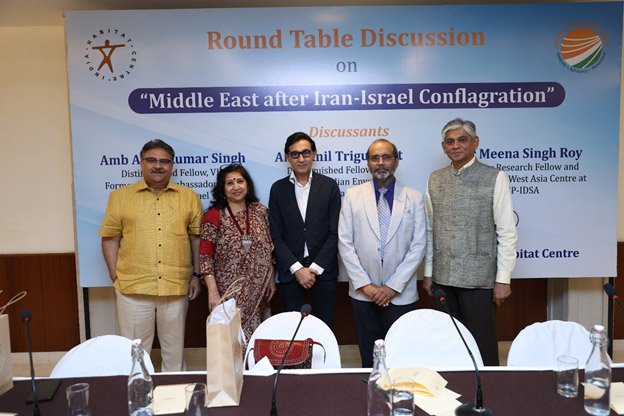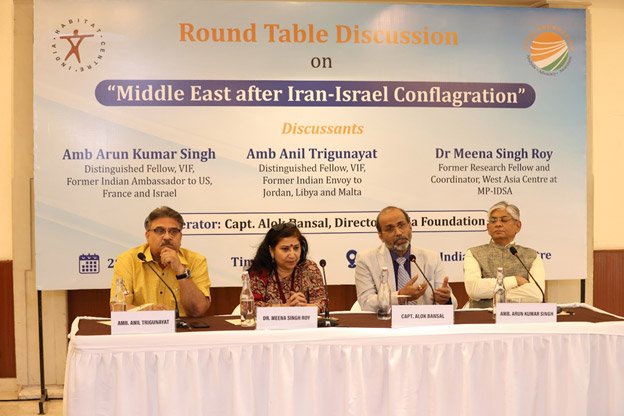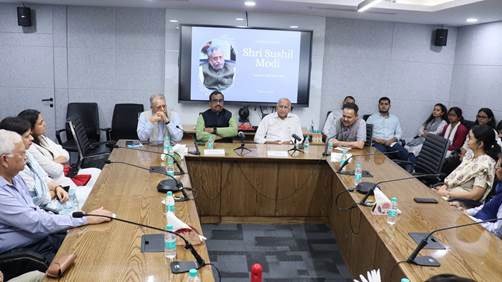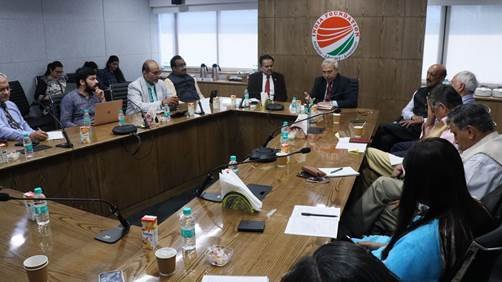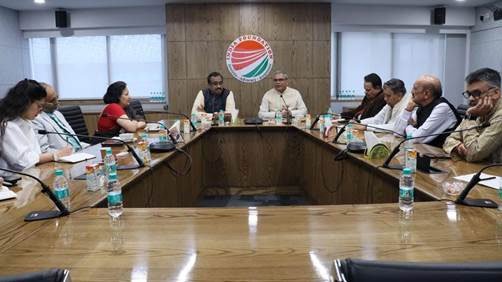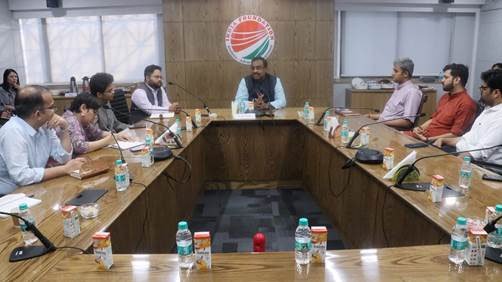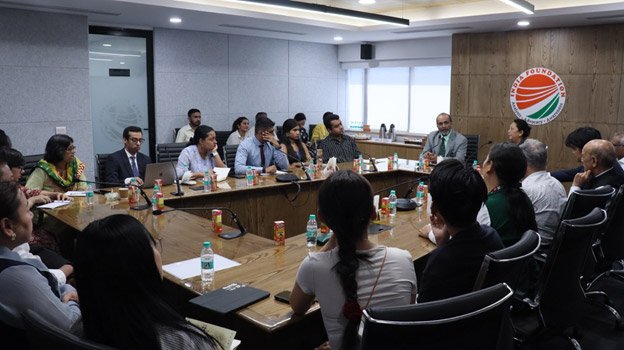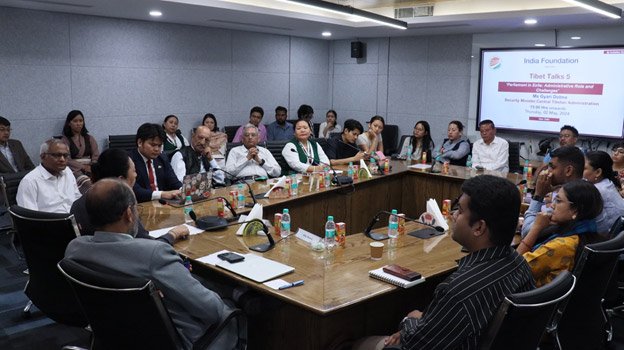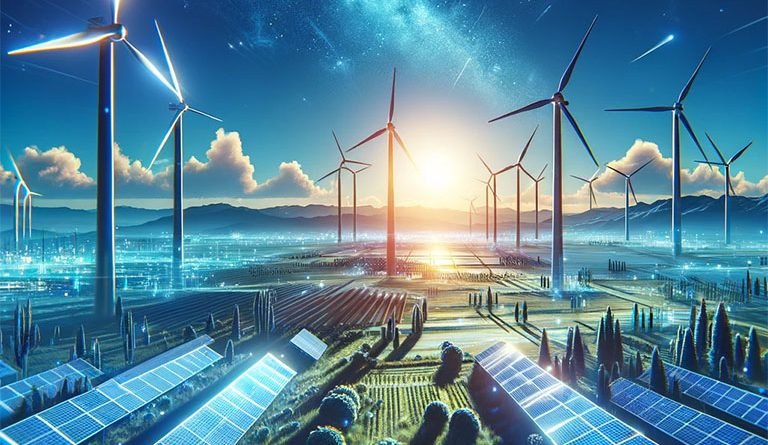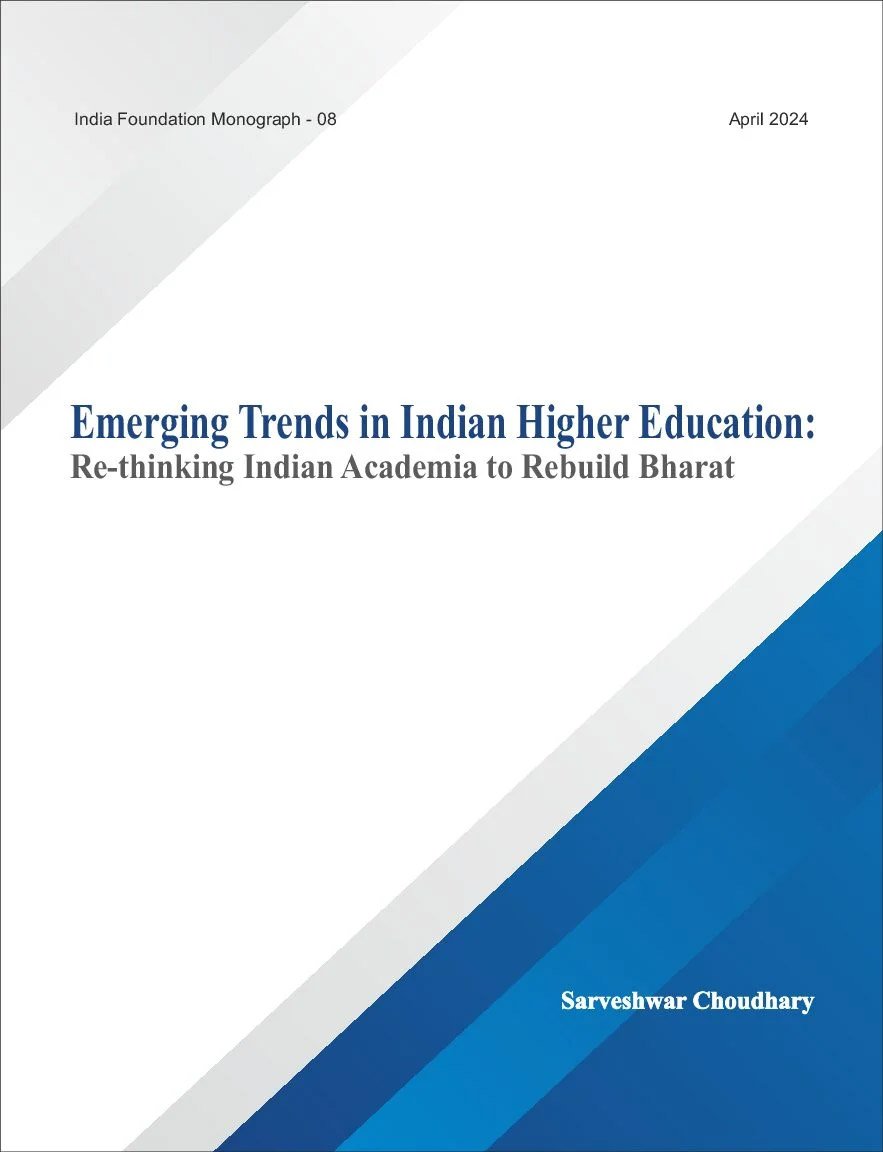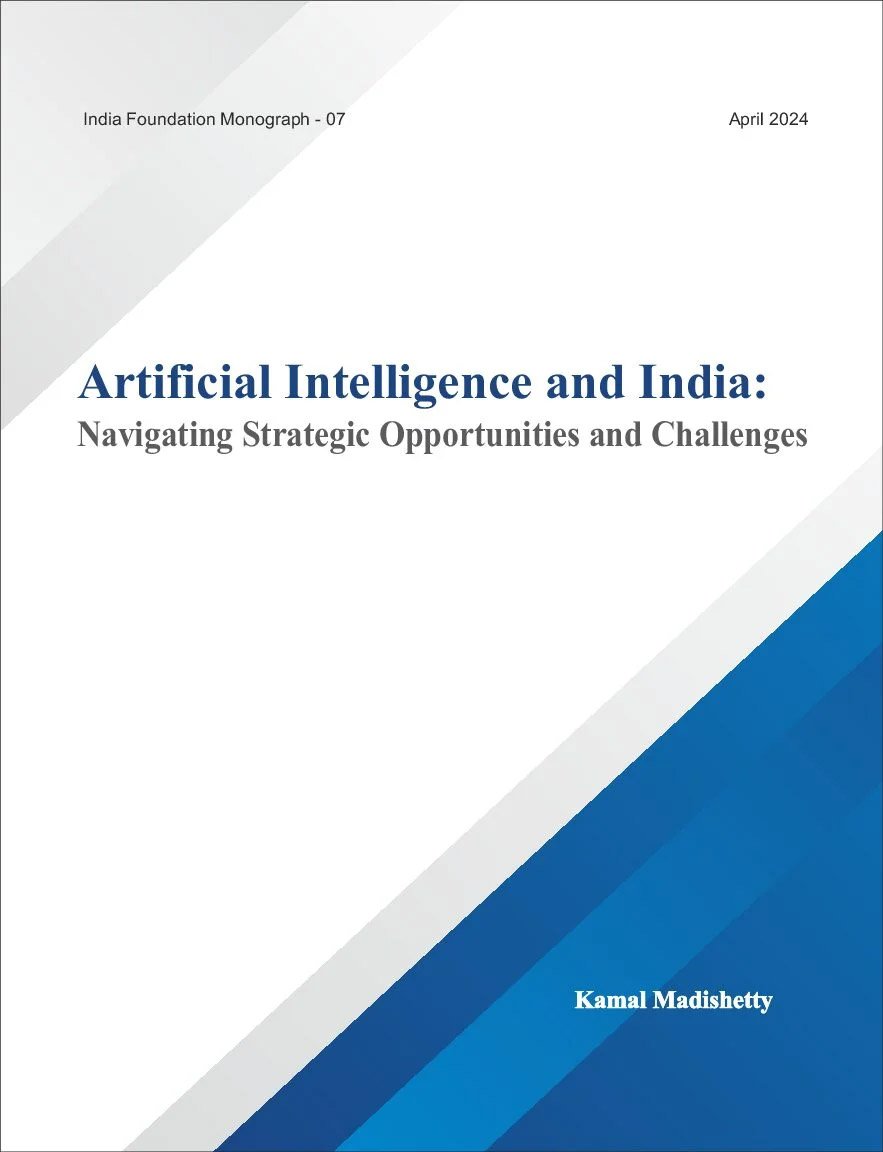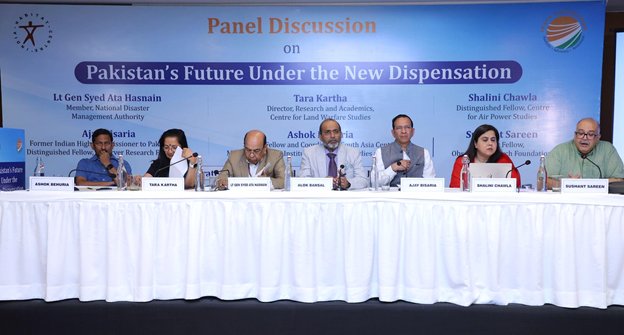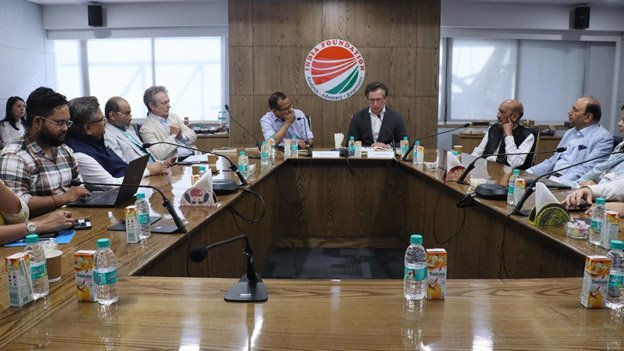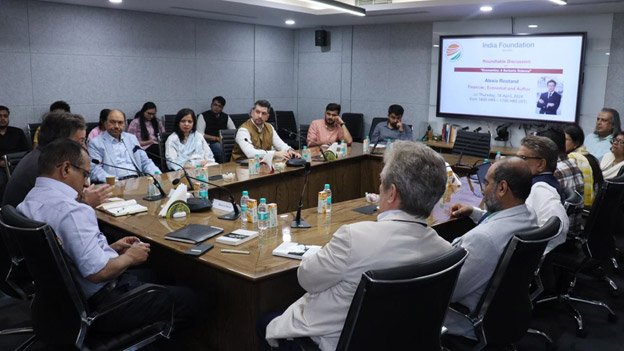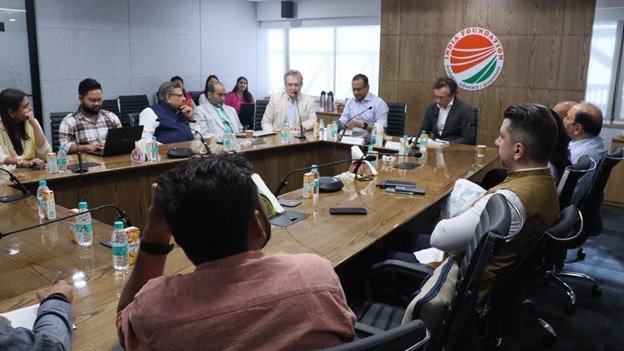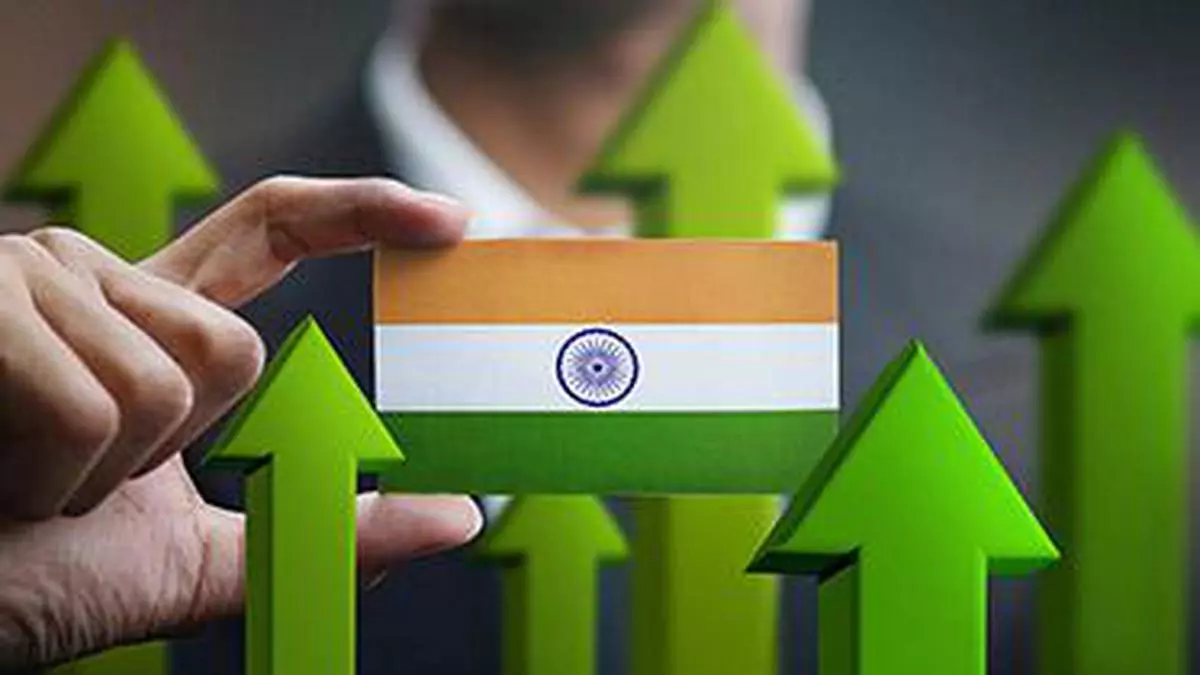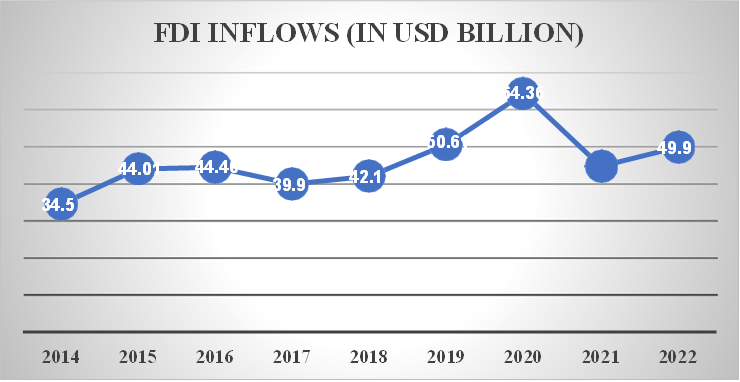Introduction
Bharat’s electricity sector is set for substantial growth and diversification. Bharat has set several targets for energy transition, security, and access, with specific timelines. As a part of the Nationally Determined Contributions (NDCs) submitted to the UNFCCC, India aims to increase the share of installed capacity for electric power derived from non-fossil fuel sources to 50% by 2030. Additionally, Bharat has set a goal to achieve net-zero emissions by 2070[1] and is on track to meet this target[2].
Under the leadership of Prime Minister Narendra Modi, the Government of India (GoI) has initiated an integrated energy assessment to support Bharat’s ambition of providing affordable electricity and clean cooking to everyone, ensuring energy security, and transitioning to renewable energy in a cost-efficient and sustainable manner. The GoI has undertaken progressive and ambitious policies and implementation efforts to electrify all sectors of the economy and provide green electricity. These policies and implementation efforts pave the way for Bharat to ensure energy security, transition, and universal and affordable energy access. The Prime Minister’s Office and the NITI Aayog, in collaboration with various central and state ministries and departments, work collaboratively to set a roadmap towards achieving these shared goals.
This paper highlights the progress made in the two terms of the Modi led NDA government to ensure Bharat’s energy security, energy transition, and universal and affordable energy access. The paper reviews the progress made regarding the push for renewable energy and decarbonisation to achieve these three policy objectives.
Overall Progress
According to the GoI sources[3], Bharat has added around 109 GW of RE capacity (excluding large hydro) during the last 10 years. Compared to capacity as of January 1, 2014, it reached over four times the total RE capacity, 31 times solar, and 2.2 times wind during the last 10 years. Bharat has also made significant progress in increasing access to electricity over the past decade. Almost all households in India now have access to electricity, and the distribution network has been strengthened throughout the country.
Projections from the 20th Electric Power Survey (EPS)[4] indicate a total installed capacity of 777.14 GW by 2029-30, with significant contributions from solar (292.56 GW), wind (99.85 GW), hydro (99.89 GW), small hydro (5.3 GW), and biomass (14.5 GW). These non-fossil fuel sources are expected to account for over 50% of the total installed capacity and contribute around 44% of the gross electricity generation during 2029-30[5] indicating Bharat’s steadfast commitment to a more sustainable energy landscape.
Renewable Energy Expansion and Decarbonisation Scorecard
Bharat aims to reduce its GDP emission intensity by 45% by 2030.[6] Currently, thermal power plants, which produce over 50% of Bharat’s total electricity output, account for one-third of the total GHG emissions.[7] As Bharat strives to meet its renewable energy expansion and decarbonisation goals, the electricity sector has embraced a diversification strategy by transitioning to cleaner energy sources such as solar, wind, bio, hydro, and atomic power.
State-nodal agencies in Bharat have gained significant expertise in renewable energy initiatives over the years. To facilitate mutual learning and the exchange of best practices, the Ministry of New and Renewable Energy (MNRE) established the Association of Renewable Energy Agencies of States (AREAS). The association comprises three standing committees: Technology and Resource Assessment, Policy and Finance, and IT. Policy initiatives like production-linked incentives and domestic content requirements will boost domestic manufacturing. Innovative regulatory support has addressed investment and counterparty risks and spurred demand.[8] At the same time, record-low solar tariffs and long-term power purchase agreements continue to draw billions of dollars in investment.[9]
Policies and programmes to ramp up renewable energy and decarbonisation solutions that have been launched and implemented since 2014 are as follows:
- Electricity (Rights of Consumers) Amendment Rules, 2023:
- Electricity (Late Payment Surcharge and Related Matters) Rules, 2022:
- Ujwal DISCOM Assurance Yojana (UDAY), 2015:
- Revamped Distribution Sector Scheme (RDSS), 2021:
- Green Energy Open Access Rules, 2022:
- Green Credit Programme, 2023, and Energy Conservation (Amendment) Act, 2022:
- Financial incentives for power sector reform.
Wind Energy
Bharat has made great strides in increasing its wind power capacity. As of June 2023, wind energy accounted for 34% of the total installed power generation capacity from renewable energy sources[10]. India now ranks as the fourth-largest market for onshore wind installations globally, with a 5% contribution to the world’s total onshore wind installations[11]. This sector has also generated approximately 50,000 jobs and hosts about 10% of the world’s wind turbine component factories[12].
Bharat has a significant potential for both onshore and offshore wind energy. According to the India Energy Security Scenarios (IESS) 2047, wind energy is expected to contribute about 22.16 million metric tonnes of oil equivalent (Mtoe) to Bharat’s total energy supply by 2032, up from 5.9 Mtoe in 2022[13]. The GoI has introduced policies to establish hybrid plants combining offshore and solar wind technologies to promote renewable energy.
Policies and programmes that have been launched and implemented to ramp up wind energy are as follows:
- National Offshore Wind Energy Policy, 2015.
- National Wind and Solar Hybrid Policy, 2018.
Solar Energy
Bharat has made significant progress in solar energy in the past five years, positioning itself as a global leader. As of 2023, solar energy constitutes the largest portion (54%) of India’s total renewable energy capacity. Bharat ranks fourth worldwide in photovoltaic (PV) deployment, with its solar capacity growing by around 200%, from about 21.5 GW in 2018 to approximately 64.3 GW in March 2023[14]. Bharat intends to derive 50% of its electricity capacity from non-fossil fuel sources by 2030, and solar energy will play a major role in achieving this. India’s solar potential is about 750 GW, which could generate 3.2 million jobs and greatly benefit the economy[15]. Recent policy measures, such as production-linked incentives and regulatory support, have spurred domestic manufacturing, addressed risks, and boosted demand.
Through the International Solar Alliance (ISA)[16], the GoI fosters global collaboration to accelerate grid interconnectivity, mobilise investment, and support deployment through capacity-building.11 Bharat must continue to engage global partners and emerge as a key contributor to driving and leading innovation in solar energy.
Domestic Solar Manufacturing
Bharat has also recently made tremendous progress in expanding its domestic solar manufacturing capabilities. Its potential for manufacturing photovoltaic (PV) modules doubled between 2020 and 2023. Bharat is expected to see a fourfold increase in its solar module manufacturing capacity by 2025 compared to 2021[17]. Furthermore, projections indicate that Bharat will achieve self-sufficiency in meeting the demand for PV modules by 2026, thanks to a projected manufacturing capacity of 110 GW[18]. Some of Bharat’s major players in the PV manufacturing industry include Waaree, Adani Solar, and Vikram Solar.
Several policies and programmes to ramp up solar energy that have been launched and implemented in the two terms of the Modi government are as follows:
- Pradhan Mantri Kisan Urja Suraksha evam Utthaan Mahabhiyan (PM KUSUM), 2019.
- GoI had offered financial incentives to support the manufacturing of solar panels.
- PM Solar Rooftop Scheme 2024.
Green Hydrogen
Green hydrogen (GH2) energy is a new development in Bharat. Green hydrogen is produced using renewable energy sources such as solar, wind, or biomass. Bharat consumes about 5 million metric tonnes (MMT)[19] of hydrogen annually, most of which is produced using fossil fuels like natural gas and naphtha. The demand for hydrogen mainly comes from the industrial sector, which uses it for petroleum refining, fertiliser production, methanol, and metal production.
Green hydrogen can potentially provide low-carbon and self-sufficient economic pathways for Bharat. The country has ample renewable resources, particularly solar and wind energy, highlighting the promising potential for green hydrogen growth. The GoI is increasingly focusing on this sector, and the National Green Hydrogen Mission was launched in 2021 to make Bharat a global hub for producing, using, and exporting green hydrogen. The efforts under this mission are expected to create around six lakh jobs by 2030[20]. NITI Aayog has prepared a comprehensive roadmap to guide the country’s GH2 strategy and enhance private sector investment[21].
Several policies and programmes to ramp up green hydrogen that have been launched and implemented in the past decade are as follows:
- National Green Hydrogen Mission, 2023.
- Green Hydrogen Standards for India 2023.
- GoI has offered financial incentives to support the manufacturing of electrolyzers.
Bioenergy
Bioenergy is a type of renewable energy generated from biomass and feedstocks. These include agricultural residues, forestry residues, animal waste, and organic municipal solid waste. As of 2023, bioenergy (biomass power and co-generation) accounts for 2.5% of the total installed energy capacity and 6% of the renewable energy mix[22]. In Bharat, approximately 32% of the country’s primary energy comes from biomass, and over 70% of the population relies on it for their energy needs[23]. The bioenergy power generation capacity currently stands at around 10 GW[24], with over 800 biomass power, bagasse cogeneration, and non-bagasse cogeneration projects established. According to the India Energy Security Scenarios (IESS) by the NITI Ayoog, bioenergy is projected to contribute around 29 terawatt hours (TWh) to the electricity supply in 2047.
At the central level, the National Bioenergy Programme and National Policy on Bio-Fuels are the major policies that the Ministry of New and Renewable Energy implements to boost bioenergy production and achieve ethanol blending targets in gasoline. In addition to these policies, a range of additional initiatives have been undertaken by the central government to support the development of BioCNG plants.[25]
Policies and programmes to ramp up bioenergy solutions that have been launched and implemented are as follows:
- National Bioenergy Programme, 2022.
- (Amended) National Policy on Bio-Fuels, 2022.
- Sustainable Alternative Towards Affordable Transportation (SATAT) initiative aims to boost the uptake of compressed biogas (CBG).
- Galvanising Organic Bio-Agro Resources Dhan (GOBARdhan).
Storage Solutions
Energy storage technologies have become increasingly important in Bharat, primarily due to the growing focus on integrating renewable energy into the national energy mix. The expansion of renewable energy sources such as solar and wind presents the challenge of efficiently managing grid stability as they are intermittent. Energy storage plays a crucial role in optimising energy systems by enabling the storage of electricity for later use. Energy storage technologies, including pumped storage hydropower (PSH), and batteries, have become crucial to ensuring a reliable and resilient energy grid. This technology serves various applications, such as grid-level balancing for renewables, electronics, behind-the-metre (BTM) power backup inverters, and supporting the EV sector.
Various energy storage options, such as batteries and PSH plants, are available for commercial use. Additionally, emerging technologies such as flywheels, supercapacitors, and hydrogen offer promising potential. Currently, Bharat has a total energy storage capacity of 4745.60 MW from PSH projects and 39.12 MWh from battery energy storage systems[26]. In 2018[27], the demand for energy storage was 23 GWh, but it is expected to grow exponentially. The energy storage market in Bharat has a combined potential of 190 GWh during 2019-25[28], driven by renewable energy integration, the fast response ancillary services (FRAS) market, and transmission and distribution deferral. The electric vehicle (EV) industry will consume more than 36 GWh of batteries by 2025[29].
Boosting Domestic Manufacturing of Batteries
A domestic battery manufacturing ecosystem with elements like a robust supply chain of cells will be crucial for Bharat to gain an edge in mobility, grid energy storage, and consumer electronics. This will help reduce import costs of lithium-ion cells, which have increased sevenfold between 2014 and 2020, safeguard against potential supply shocks, and create new jobs. Further, there are opportunities for private players to invest in this sector through arrangements like government partnerships, which enable risk-sharing. The government has already started providing incentives for manufacturers through the PLI scheme approved in 2021.13
Policies and programmes to ramp up energy storage solutions that have been launched and implemented are as follows:
- National Energy Storage Mission: In 2018.
- Battery Waste Management Rules in 2022.
- National Programme on Advanced Chemistry Cell (ACC) Battery Storage.
- National Mission on Transformative Mobility and Battery Storage.
- National Mission on Transformative Mobility and Battery Storage.
- National Mission for Enhanced Energy Efficiency, 2021.
- GoI has offered financial incentives to support the manufacturing of solar batteries and related equipment.
Emerging Technologies
New and upcoming technologies in the energy sector are providing exciting opportunities for sustainable and eco-friendly energy sources. The Ministry of New and Renewable Energy (MNRE) is currently focusing on four new technologies—ocean energy, geothermal energy, hydrogen energy, and energy storage—to promote research and industrial development in Bharat. Progress on green hydrogen and storage technologies has been covered above in this paper. Ocean energy and geothermal energy are still in the early stages of development and are largely focused on exploration. Geothermal energy sources are sustainable and offer a consistent source of clean energy by tapping into the earth’s core heat, while ocean energy sources use the power of waves, tides, and temperature differences to generate electricity.
Negative Emission Technologies
Negative emission technologies (NETs) refer to innovative approaches and technologies that actively remove greenhouse gases—usually carbon dioxide—from the atmosphere. The process is referred to as carbon dioxide removal (CDR) if it involves removing carbon dioxide, or more broadly, as greenhouse gas removal (GGR) if it involves removing gases other than CO2. CDR approaches involve capturing and storing CO2 or converting it into useful products, such as via afforestation and reforestation, soil carbon sequestration, bioenergy with carbon capture and storage (BECCS), and direct air capture and carbon capture, utilisation, and storage (CCUS). NETs have the potential to play a crucial role in decarbonising energy-intensive sectors such as electricity, mining, and steel. CCUS is presently the only recognised technology capable of reducing carbon emissions in CO2-intensive and hard-to-electrify sectors such as heavy industries, including steel, cement, oil & gas, petrochemicals & chemicals, and fertilisers.[30] Bharat plans to capture 750 mtpa of CO2 via CCUS technologies by 2050, which makes up 30% of all capturable emissions of 2400 mtpa.[31] Thus, there is a growing interest in negative emission technologies, mainly CCUS, in Bharat as part of the nation’s efforts to combat climate change and decrease greenhouse gas emissions in the energy sector.[32] One of Bharat’s first CCUS projects is being led by Indian Oil Corporation Ltd. (IOCL) and Oil and Natural Gas Corporation (ONGC), who are setting up Bharat’s first large-scale carbon capture project in Gujarat.[33] The project involves capturing CO2 at the IOCL refinery, compressing it, and transporting it through pipelines to ONGC’s oil fields for enhanced oil recovery (EOR), leading to increased oil production while ensuring the permanent storage of CO2.
Policies for NETs are still in their early development stages; however, several guiding frameworks can be leveraged to support Bharat’s decarbonisation efforts:
- Draft 2030 Roadmap for Carbon Capture Utilisation and Storage (CCUS) for Upstream E&P Companies, 2022[34]:
- CCUS Policy Framework and its Deployment Mechanism in India, 2021.[35]
Conclusion
The enabling policies and implementation support for renewable energy expansion and decarbonisation efforts over the last decade have been unprecedented in terms of their scale, speed, and reach. Overall, the Modi led NDA government scores an A+ scorecard. As it plans for its third term, reforms to improve the financial health of electricity distribution companies, a continued push for domestic manufacturing of renewable energy components, enhancing access to green finance, enabling policies for scaling up private sector investments, and strengthening the capacity of government functionaries should remain priorities to realise the aims and objectives of Viksit Bharat.
Author Brief Bio: Jagjeet Singh Sareen is a Partner at Dalberg Advisors, a global strategy advisor firm. He has previously served as an Assistant Director-General of the International Solar Alliance and a Senior Policy Officer at the World Bank Group.
References:
[1] Ministry of Environment, Forests and Climate Change, Net zero emissions target, 2023
[2] Cabinet, Cabinet approves India’s Updated Nationally Determined Contribution to be communicated to the United Nations Framework Convention on Climate Change, 2022
[3] Ministry of New and Renewable Energy, 2024
[4] CEA, Central Electricity Authority, Report on optimal generation capacity mix for 2029-30, 2023
[5] CEA, Central Electricity Authority, Report on optimal generation capacity mix for 2029-30, 2023
[6] Cabinet, India now stands committed to reduce Emissions Intensity of its GDP by 45 percent by 2030, 2022
[7] ORF, Power Sector: Stumbling block in India’s net-zero journey, 2022
[8] CEEW, How India’s Solar and Wind Policies Enabled its Energy Transition, 2021
[9] IEEFA, Renewable energy investment surges in India; IEEFA, Capital Flows Underpinning India’s Energy Transformation, 2022
[10] Central Electricity Authority, Executive Summary on Power Sector, June 2023; Note: RES include Small Hydro Project, Biomass Power, Urban and Industrial Waste Power, Solar and Wind Energy
[11] Global Wind Energy Council, India Wind Energy Market Outlook 2022-2026, 2022
[12] National Institute of Wind Energy, India’s Wind Potential Atlas at 120m agl, 2019
[13] NITI Aayog, India Energy Security Scenarios (IESS) 2047, 2021
[14] Ministry of New & Renewable Energy, Physical Progress, 2023; Ministry of New & Renewable Energy, Solar Energy, accessed July 2023; Ministry of New and Renewable Energy, Solar Energy capacity has nearly tripled in last 5 years from 21651 MW to 64380 MW, 2023
[15]Ministry of New & Renewable Energy, Solar Energy, accessed July 2023; CEEW, India’s Expanding Clean Energy Workforce, 2022
[16] Isolaralliance.org
[17] Ministry of Information and Broadcasting, Union Budget 2022-2023: India Embarks on a Solar Journey, 2022
[18] Cabinet, Cabinet approves Production Linked Incentive Scheme on ‘National programme on High Efficiency Solar PV Modules’ for achieving manufacturing capacity of Giga Watt (GW) scale in High Efficiency Solar PV Modules, 2022; Ministry of Power, Government allocates 39600 MW of domestic Solar PV module manufacturing capacity under PLI, 2023
[19] Ministry of New and Renewable Energy, National Green Hydrogen Mission, 2023
[20] Ministry of New and Renewable Energy, National Green Hydrogen Mission, 2023
[21] NITI Aayog, Harnessing Green Hydrogen, 2022
[22] Ministry of Power, Power Sector at a Glance ALL INDIA, 2023
[23] Ministry of New and Renewable Energy, Bio Energy, 2022
[24] Ministry of New and Renewable Energy, Bio Energy, 2022
[25] Press Information Bureau, Establishment of Bio-CNG plants, 2022
[26] Ministry of New and Renewable Energy, 64.54 billion units electricity produced from Wind Energy during April, 2022, 2023
[27] India Smart Grid Forum, Energy Storage System Roadmap for India: 2019-2032, 2019; India Energy Storage Alliance, India Stationary Behind-the-meter (BTM) Energy Storage & Railway Battery Market Overview 2021-30, 2022; Ministry of Power, National Electricity Plan (Draft), 2022
[28] India Smart Grid Forum, Energy Storage System Roadmap for India: 2019-2032, 2019
[29] India Smart Grid Forum, Energy Storage System Roadmap for India: 2019-2032, 2019
[30] NITI Aayog, CCUS Policy Framework and its Deployment Mechanism in India, 2021
[31] NITI Aayog, CCUS Policy Framework and its Deployment Mechanism in India, 2021
[32] NITI Aayog, CCUS Policy Framework and its Deployment Mechanism in India, 2021
[33] Ministry of Petroleum, Oil and Natural Gas, Draft 2030 Roadmap for Carbon Capture Utilization and Storage (CCUS) for Upstream E&P Companies, 2022
[34] Ministry of Petroleum, Oil and Natural Gas, Draft 2030 Roadmap for Carbon Capture Utilization and Storage (CCUS) for Upstream E&P Companies, 2022
[35] NITI Aayog, CCUS Policy Framework and its Deployment Mechanism in India, 2021

